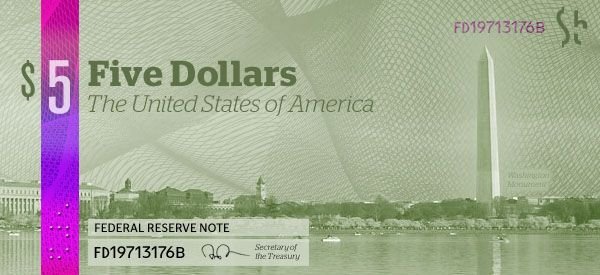|
|
The New Design Of Dollar
|
The U.S. dollar was created and defined by the Coinage Act of 1792. It specified a "dollar" to be based in the Mexican peso at 1 dollar per peso and between 371 and 416 grains (27.0 g) of silver (depending on purity) and an 'eagle" to be between 247 and 270 grains (17 g) of gold (again depending on purity). The choice of the value 371 grains arose from Alexander Hamilton's decision to base the new American unit on the average weight of a selection of worn Spanish dollars (and later Mexican peso). Hamilton got the treasury to weigh a sample of Spanish dollars and the average weight came out to be 371 grains. A new Spanish dollar was usually about 377 grains in weight, and so the new U.S. dollar was at a slight discount in relation to the Spanish dollar. The gold equivalent of the Spanish dollar in sterling was ₤1 = $4.80, whereas the gold equivalent of the U.S. dollar was ₤1 = 4.86⅔. This exchange rate with sterling remained right up until Britain abandoned the gold standard in 1931.
The Coinage Act of 1792 set the value of an eagle at 10 dollars, and the dollar at 1/10th eagle. It called for 90% silver alloy coins in denominations of 1, 1/2, 1/4, 1/10, and 1/20 dollars; it called for 90% gold alloy coins in denominations of 1, 1/2, 1/4, and 1/10 eagles.
The value of gold or silver contained in the dollar was then converted into relative value in the economy for the buying and selling of goods. This allowed the value of things to remain fairly constant over time, except for the influx and outflux of gold and silver in the nation's economy.
The early currency of the USA did not exhibit faces of presidents, as is the custom now. In fact, George Washington was against having his face on the currency, a practice he compared to the policies of European monarchs. The currency as we know it today did not get the faces they currently have until after the early 20th century; before that "heads" side of coinage used profile faces and striding, seated, and standing figures from Greek and Roman mythology and composite native Americans. The last coins to be converted to profiles of historic Americans were the dime (1946) and the Dollar (1971).
|
|









